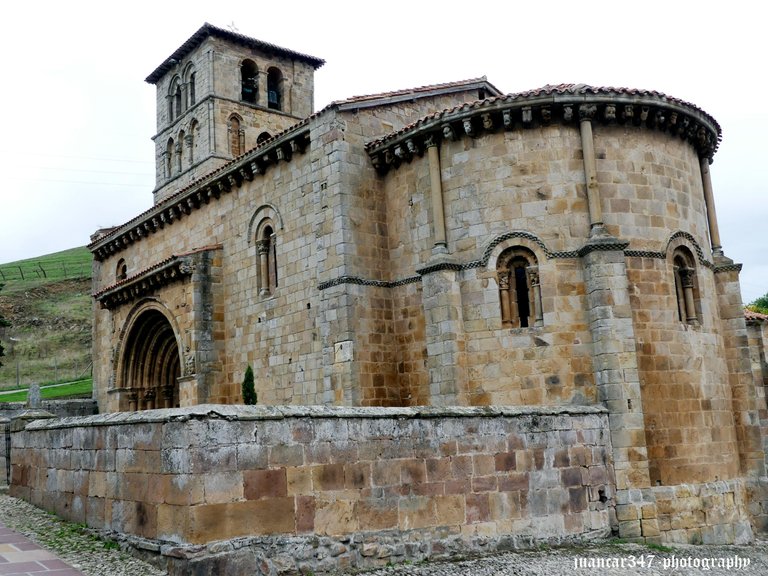
On this occasion, I wish to propose to you a subject that still today, at this point in the 21st century, continues to raise endless suspicions and in many aspects, continues to be labeled as taboo by a large part of the official powers that be: Sacred Architecture and the Eroticism.

When we talk about Sacred Architecture and Eroticism, possibly to all or almost all, the surprising images of Hindu tantric temples and their strong eroticism come to mind.
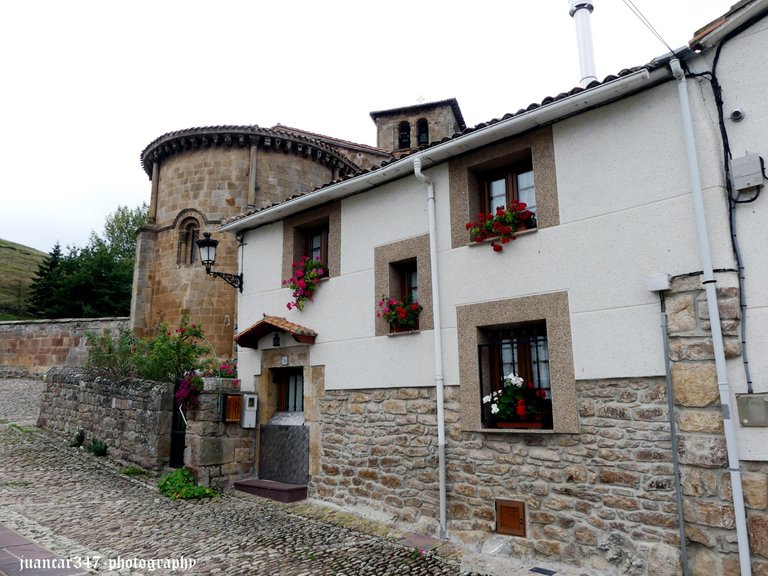
But the trip that I propose to you is not located in those exotic and millenary countries of Asia, full of paradoxes and a beauty that has always been a fascinating magnet for the desire for adventure and knowledge of many Westerners.
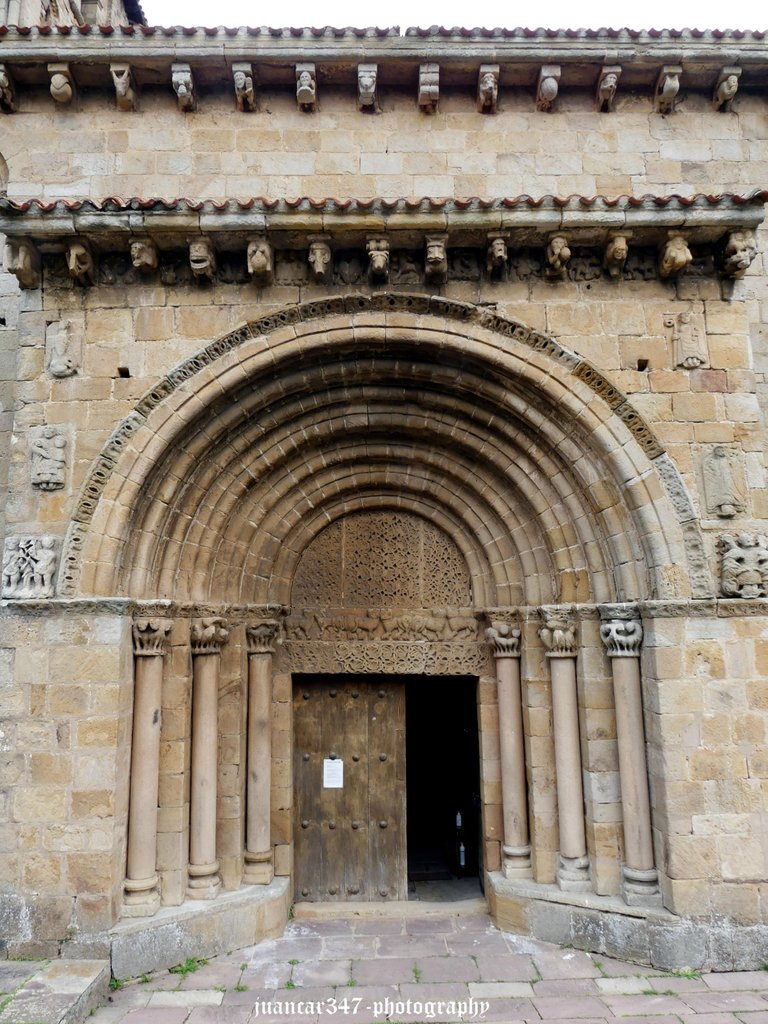
On the contrary, the trip that I propose to you, takes place here, in Spain and more specifically in the heart of a Community, that of Cantabria, which in terms of Sacred Architecture and Eroticism, is a disconcerting paradise for every seeker of enigmas and sensations.
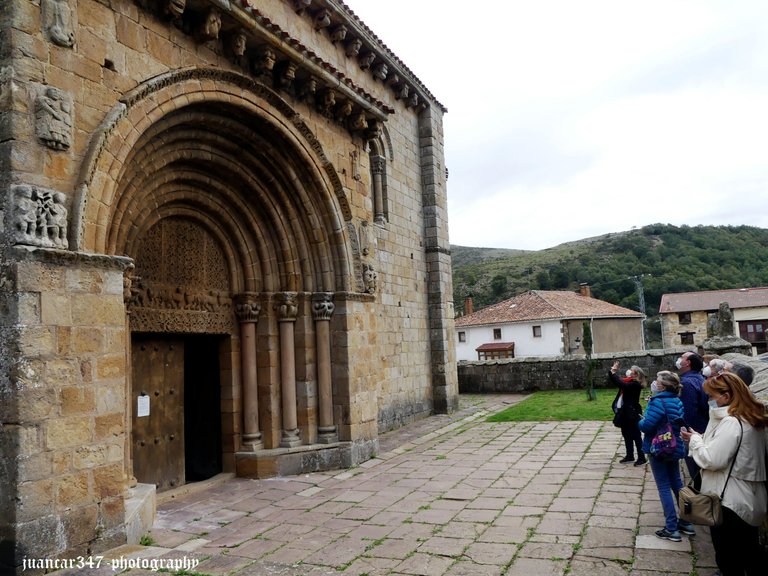
Located just 5 kilometers from Reinosa -which could be considered as one of the capitals of the so-called Palentina Mountain- and just over an hour away from Santander and the Cantabrian coast, Cervatos is a small town that could possibly have passed completely unnoticed by tourism in general and by scholars of Romanesque Art and Architecture in particular, had it not been for the fact that one of the four impressive Romanesque Collegiate churches of Cantabria is located there - anyone would say inexplicably -: the Collegiate Church of San Pedro.

What distinguishes this Collegiate Church from the others -San Martín de Elines, Santa Cruz de Castañeda and Santa Juliana de Santillana del Mar- is that, apart from the unfortunate detail of not preserving its original cloister, it remains intact or at least in excellent condition conservation, a meritorious amount of corbels and illustrated capitals, which by themselves constitute a true Kama Sutra, which to this day continues to generate all kinds of deliberations and conjectures.

With origins dating back to the 12th century, the Collegiate Church of San Pedro de Cervatos, theoretically, hardly differs from other similar buildings, consisting of the church, with its typical cross-shaped plan and apse or head facing east, towards sunrise and as we have ventured, with a disappeared cloister, whose elements would have been a notable source of information, possibly similar to that of the collegiate church of Santa Juliana de Santillana del Mar.
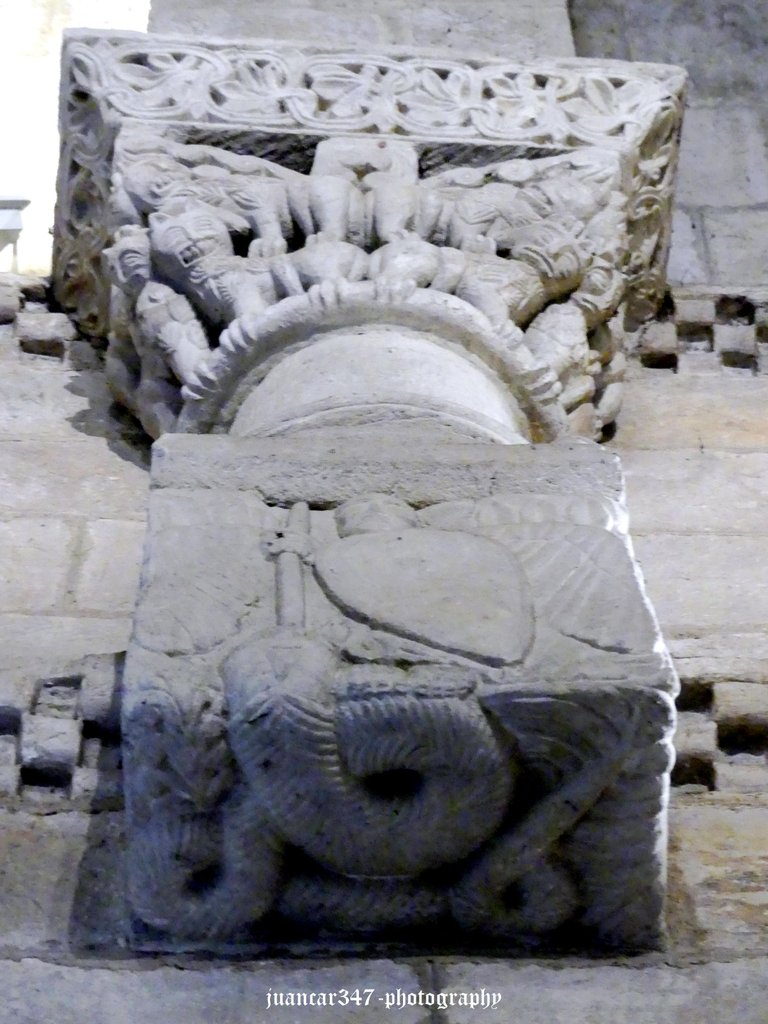
Its interior, although austere, nevertheless has the presence, under an apse known as the oven type, of a gallery of blind semi-circular arches, in which the presence of a beautiful iconographic repertoire can be appreciated, where there is no Also missing are the references to lions -observed already in the frieze of the entrance portico- foliaceous motifs, the eternal struggle of Saint Michael with the Devil -represented with the typical form of a dragon or serpent- and some erotic reference -very similar , in its obscene mixture of men and animals copulating, to a certain representation that can also be observed, curiously, in the same situation, in the church of Santiago de los Caballeros in Zamora - located in the upper left apse capital.
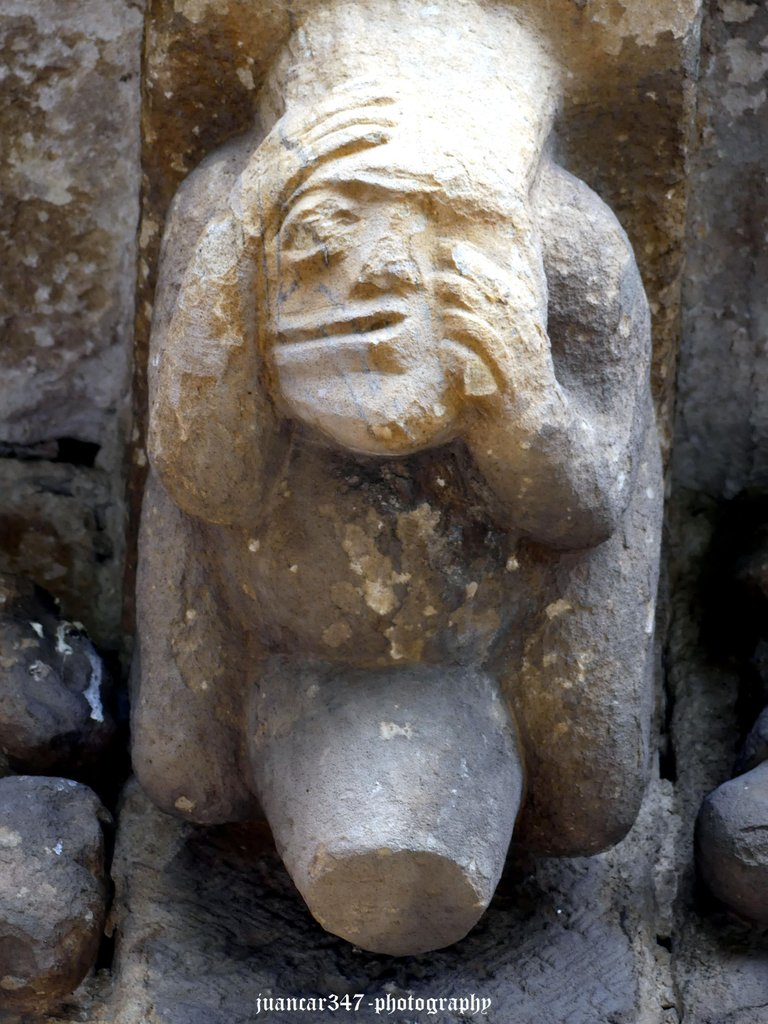
Back abroad, it is observed that the church of the Collegiate Church of San Pedro de Cervatos, with its more than one hundred corbels and metopes, is an authentic manual - to call it somehow - of the Hindu Kama Sutra, where a large majority Of the illustrated themes, they refer to some sexual acts so verbatim shown, that on many occasions, they were the object of the hammer of modern priests and prelates, who saw in them some execrable acts of obscenity.
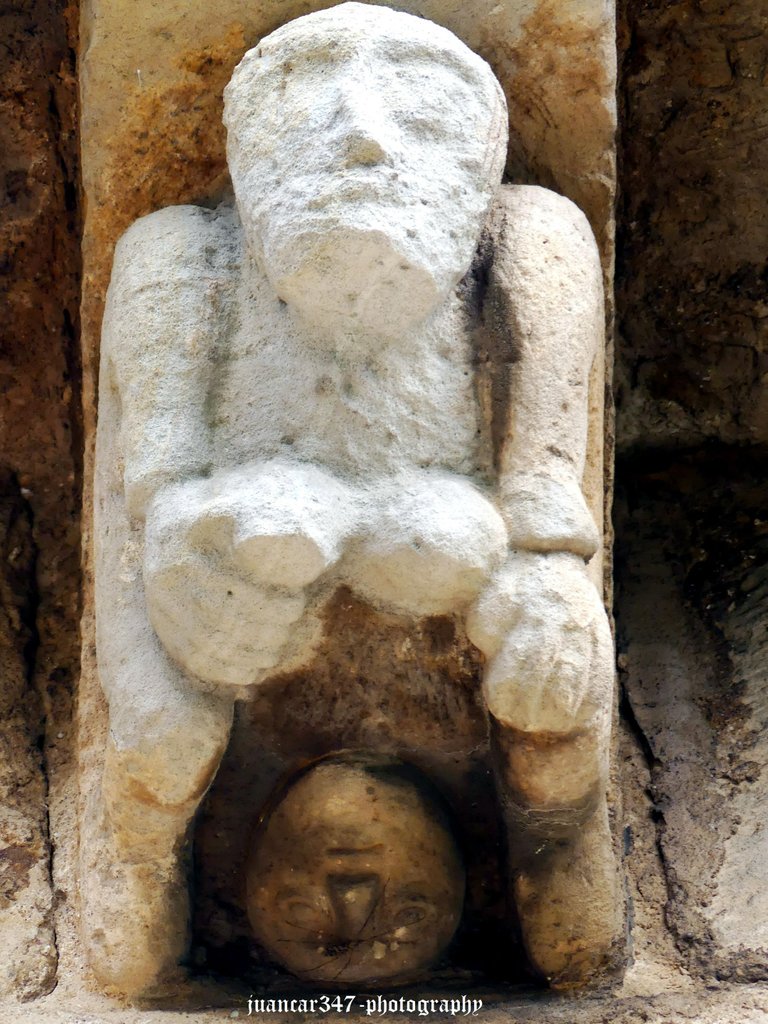
Perhaps to understand them a little better, one would have to go back to the time and circumstances in which they were conceived; a time and circumstances, which apart from carrying a certain symbolic meaning, in which many historians observe a relationship with the aforementioned Hindu tantric cults, would also carry an eminently practical meaning, since we must remember that in that period, the Peninsula Iberica was practically under Muslim domination and it was precisely from these Christian kingdoms in the North that the period known as Reconquest began.
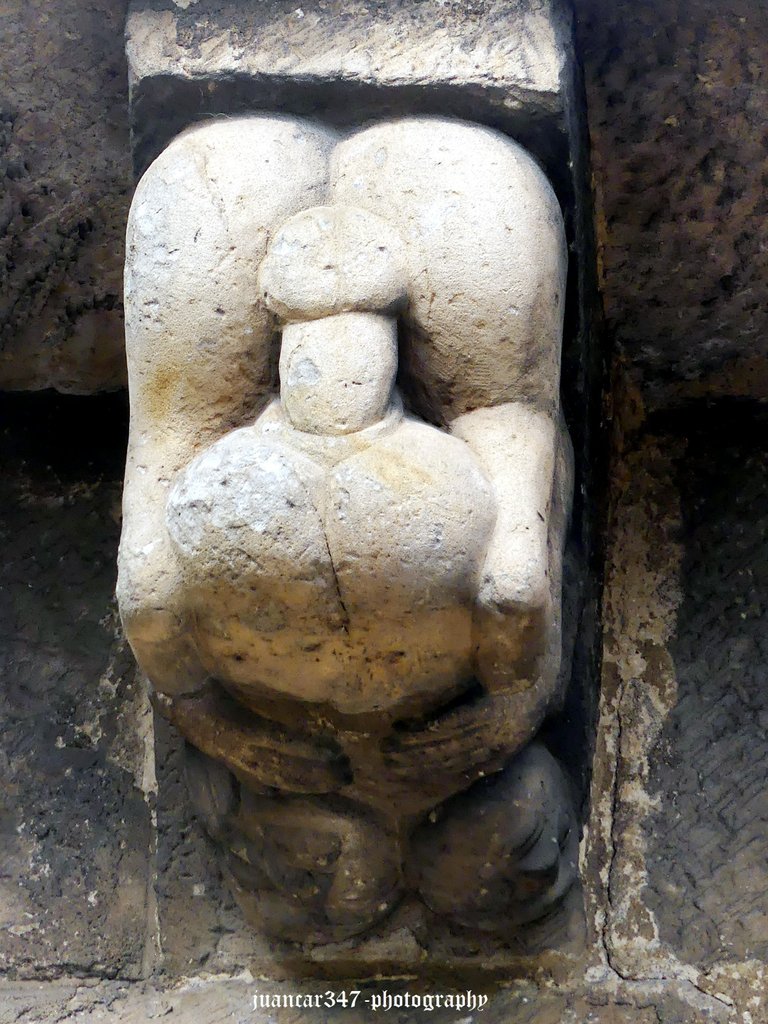
This also has its double meaning, since the Church, as a factual power that it was, on the one hand condemned but on the other allowed and encouraged, since the act of procreation, even if it was carried out outside the strict conditions of the permitted sphere of marriage. , generated two important things: it kept calm a people that was already quite oppressed - imagine, in this sense, that their sex was like football in modern times, a kind of 'opium of the people' - and most importantly for kings and prelates: they generated children who would swell the fighting armies, taking into account the need for warriors and the great slaughter that occurred in each battle.
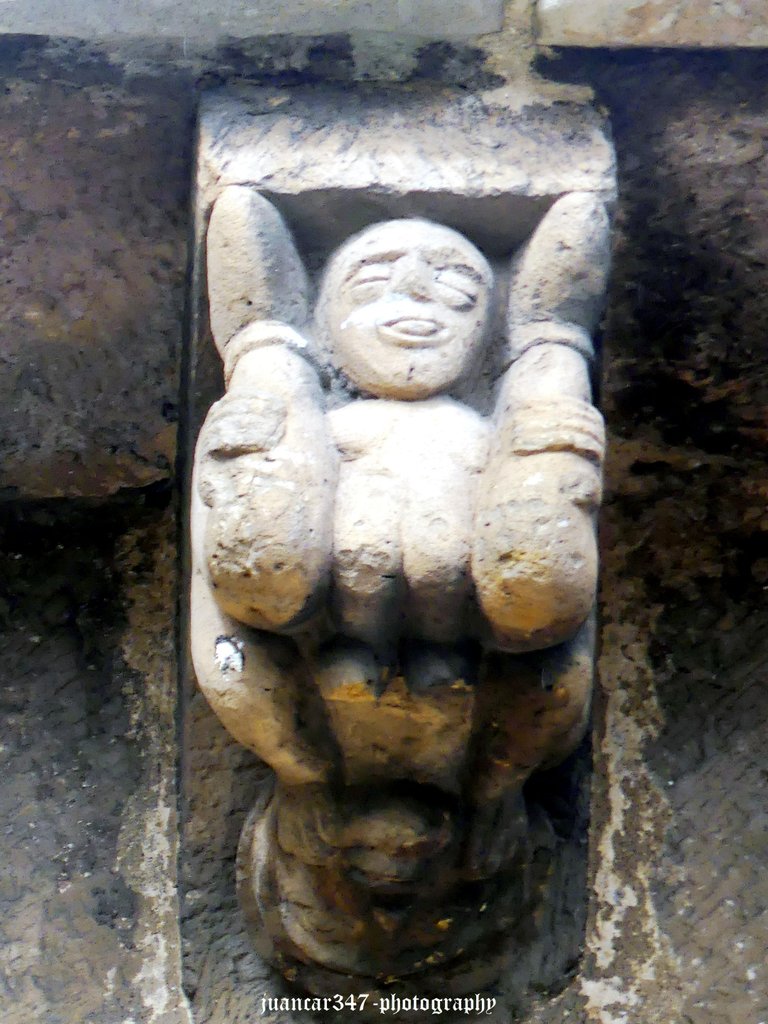
We could look for more explanations and see, behind this overflowing eroticism, a symbolic reference to women as mother and generator of life, as they commented to the great Romanian hermeneut, Mircea Eliade, in 1947, when he was extremely dazzled by the exuberant erotic paintings of the temples of Ajanta, but all these are not, but disquisitions and each one is very free to think as best he thinks or suits him.
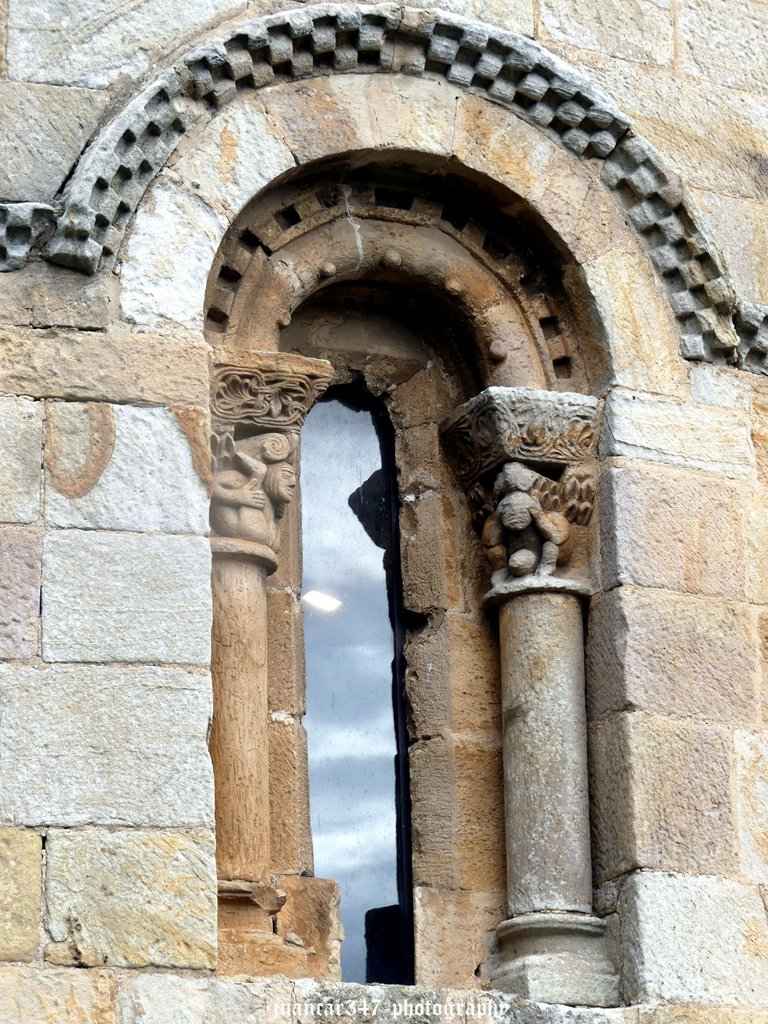
What has been tried to show here is simply the relationship that also existed in the West, between Sacred Architecture and Eroticism.

RELATED MOVIE:
NOTICE: Both the text and the photographs that accompany it, as well as the video that illustrates it, are my exclusive intellectual property and therefore, are subject to my Copyright.
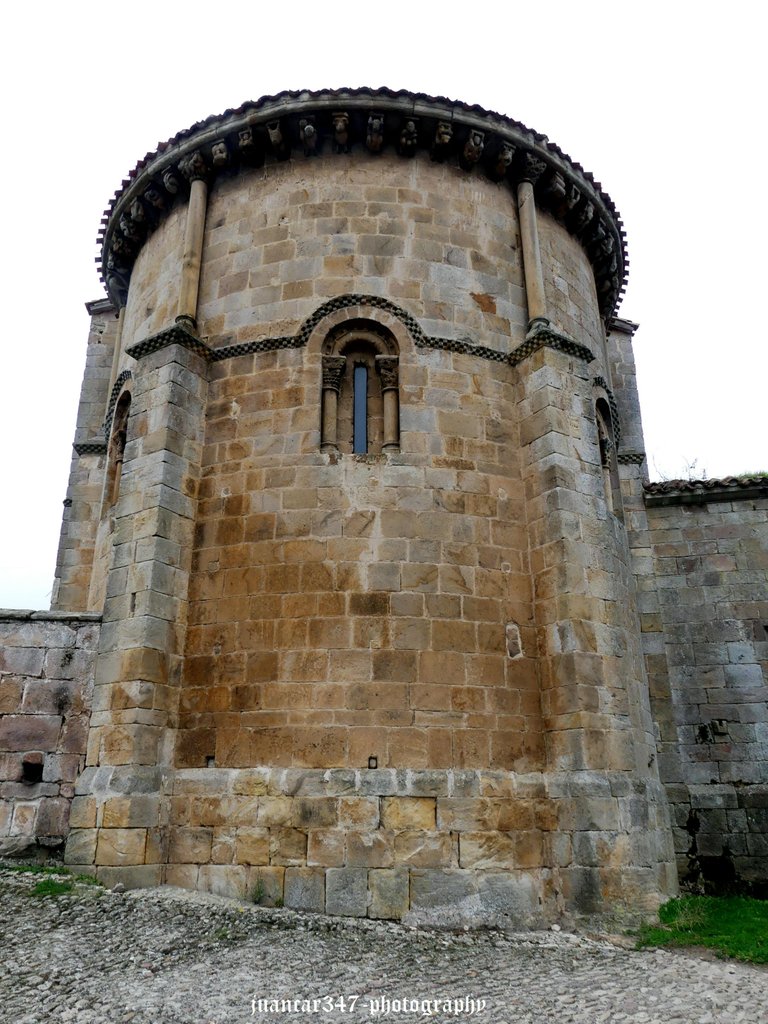
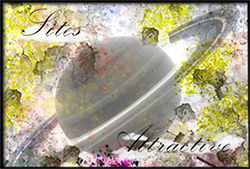



Congratulations, your post has been added to Pinmapple! 🎉🥳🍍
Did you know you have your own profile map?
And every post has their own map too!
Want to have your post on the map too?
Thank-you very much
I think I can't write you what I'm thinking would be too obscene jjajja
But the collegiate church is beautiful, a little austere, but its figures say it is a temple of love. Today it may be considered in bad taste, we are becoming very thin from the outside.
In those times and not so distant my mother used to say:
They had so many children because there was no television haha
Note that in those days there was no Playboy and there was no electricity haha I think I'm digressing.
It's a party and that activates my mind
Happy afternoon dear juankar
Creo que no te puedo escribir lo que estoy pensando sería demasiado obsceno jjajja
Pero la colegiata es bonita, un poco austera, pero sus figuras lo dicen todo un templo de amor hoy en día puede que se considere de mal gusto, nos estamos volviendo muy finos de boca para fuera.
En aquellos tiempos y no tan lejanos mi madre decía:
Tenían tantos hijos porque no había televisión jaja
Date cuenta que en aquellos tiempos tampoco existía el Playboy y no había electricidad jaja creo que estoy divagando.
es fiesta y eso activa mi mente
Feliz tarde querido juankar
Bueno, es algo bastante paradójico, que sin embargo, dejando aparte las sensaciones o la impresión que pueda producirle a cada uno, merece todo el respeto. Hay que tener en cuenta, que esas figuras no están ahí porque sí, si no que en la época en la que fueron ejecutadas, tenían un sentido y formaban parte de un recinto sagrado, obedeciendo no sólo a un sentido moralizante, sino también a unos objetivos reales, sobre los que se podría discutir largo y tendido, habida cuenta de que sólo he hecho una pequeña exposición de lo que realmente puede haber detrás de todo esto. He hablado de lo más evidente, de la necesidad imperiosa de la procreación en una sociedad que se veía inmersa en una lucha de reconquista que necesitaba nutrir sus ejércitos. Pero realmente, hay mitos mucho más profundos y mucho más antiguos (como el de Príapo o los cultos matriarcales) que se esconden detrás. Pero eso será cuestión de otro debate. Un abrazo
Well, it is something quite paradoxical, which however, leaving aside the feelings or the impression that it may produce on each one, deserves all the respect. It must be borne in mind that these figures are not there just because, but at the time in which they were executed, they had a meaning and were part of a sacred enclosure, obeying not only a moralizing sense, but also some real objectives, which could be discussed at length, considering that I have only made a small exposition of what may really be behind all this. I have spoken of the most obvious, of the imperative need for procreation in a society that was immersed in a struggle for reconquest that needed to nurture its armies. But really, there are much deeper and much older myths (like that of Priapus or the matriarchal cults) that hide behind. But that will be a matter for another debate. A hug
Greetings @juancar347. This is the very first time I've encountered a religious building being ornamented with lustful sculptures and markings. Isn't it enough that the phrase "Sacred Architecture and Eroticism", already ironic in itself? I mean, sacred being related to the divine and eroticism pointing to the carnal pleasures of the world? These morbid manifestations would definitely stir controversy plus would confuse any modern believer of various faiths.
If I was standing in front of that church, I'll have no clue about the strange carvings embedded in the location. You need to be an extremely keen observer to notice and digest all the unusual architectural elements that lay within. Without proper education and the flexibility of an open mind, it would surely be difficult to accept the obvious carvings of indecent human and animal figures presented. How much more in front of ignorant visitors and to those with untrained eyes?
During your visit here, were you already expecting to see this, or were you also caught by surprise?
I understand that this may represent an emotional shock of the first order. But as I have said in previous comments, it could be said that these puddles come from old sludge. In fact, it could be argued, in addition, that they were already present in the oldest cosmologies and curling the curl of History a bit, to see in it, too, a kind of molding between different types of understanding divinity: nomads or cattlemen and the sedentary or farmers. The latter performed numerous fertility rites and generally worshiped the figure of the Mother Goddess. The cattlemen, on the contrary, worshiped the Sun and later, it was denominated in other ways, until the main religions that are called the Cultures or Religions of the Book: Christian, Jewish and Muslim. As antecedents, the ancient Iberian peoples, for the most part, worshiped the figure of the Mother Goddess and among the characteristics of their rites, there were fertility ceremonies, which over time and seeing the Christian evangelizers the reluctance of the peoples to accept the new religion, they put on makeup in the popular pilgrimages, where the common people gave free rein to the joy of the abundance of the fields, under the apparent adoration of some Christian saint or saint and at the end of which, there were also an infinity of pregnancies It may be a bit difficult to understand, but I have tried to put you in some background that would have made a post too extensive, especially when you know that people hardly read. It is not the first time that I go to this place. In fact, the last one (to which these images and the video belong) was made last week during my trip to Cantabria. I will also tell you that there are multiple, hundreds of details and it is impossible to glimpse them all at a single glance or in a single visit. It is what I like about this hobby, that it makes you study the collected material, notice the details and return to verify it and, on many occasions, find new details. I will be happy to comment on any other question or information that you consider appropriate. Thank you very much for your comment and kind regards.
Entiendo que esto puede representar un choque emocional de primer orden. Pero como he dicho en comentarios anteriores, podría decirse que estos charcos vienen de antiguos lodos. De hecho, podría arguirse, además, que ya estaban presentes en las más antiguas cosmologías y rizando un poco el rizo de la Historia, ver en ello, también, una especie de amoldamiento entre tipos distintos de entender la divinidad: los nómadas o ganaderos y los sedentarios o agricultores. Estos últimos, realizaban numerosos ritos a la fertilidad y por regla general, adoraban la figura de la Diosa Madre. Los ganaderos, por el contrario, adoraban al Sol y posteriormente, éste fue denominándose de otras maneras, hasta llegar a las principales religiones que se denominan las Culturas o Religiones del Libro: cristiana, judía y musulmana. Como antecedentes, los antiguos pueblos íberos, en su mayoría adoraban la figura de la Diosa Madre y entre las características de sus ritos, figuraban las ceremonias de fertilidad, que con el tiempo y viendo los evangelizadores cristianos la renuencia de los pueblos a aceptar la nueva religión, se maquillaron en las populares romerías, donde el pueblo llano daba rienda suelta a la alegría de la abundancia de los campos, bajo la aparente adoración de algún santo o santa cristianos y al final de las cuales, se constataban, también, infinidad de embarazos. Tal vez sea un poco difícil de comprender, pero he procurado ponerle en algunos antecedentes que hubieran hecho un post demasiado extensivo, sobre todo cuando se sabe que la gente apenas lee. No es la primera vez que acudo a este lugar. De hecho, la última (a la que pertenecen estas imágenes y el vídeo) la realicé la semana pasada durante mi viaje a Cantabria. Le diré, además, que hay múltiples, cientos de detalles y es imposible vislumbrarlos todos de un solo vistazo o en una única visita. Es lo que me gusta de esta afición, que te hace estudiar el material recogido, percatarte de los detalles y volver para verificarlo y en muchas ocasiones, encontrarte detalles nuevos. Estaré encantado de comentar cualquier otra cuestión o dato que considere oportuno. Muchas gracias por su comentario y un cordial saludo.
Thank you so much for shedding light on this matter. Yes, it seems to me like those obscene carvings were of ancient origin and belonged to a period when primitive worship of gods was the norm. That's why it's not my intent to falsely judge these topics because, as contradicting as these events may sound to our current generations, these peculiar mysteries remain part and parcel of our human history. So, we need to research more unknown details to be able to understand its overall context.
It's certainly a rewarding experience to be a curious architectural explorer like you. And the Architecture+Design Community is truly honored to learn plenty of interesting facts from your various investigations around Spain and other locations. More power to your future adventures and have an awesome week my friend! 😊
Thankful for your kindness and understanding. Warm regards and I also wish you a great week.
Agradecido por su amabilidad y comprensión. Un afectuoso saludo y también le deseo una excelente semana.
I suggest you Google the term "Khajuraho" Maybe you will change your mind. I will write about it as soon as I can find the images on my drives.
Thanks for the valuable feedback @sunnyag - it's important to keep learning. Looking forward to your special post about this topic. Cheers!
Con esta publicación me quedé pensando en el puritanismo trasnochado de algunas religiones que ven la sexualidad como pecado. El que existan este tipo de esculturas y representaciones en templos sagrados antiguos y que en muchos países, hoy, se juzguen este mismo tipo de cosas, me hace pensar que tan avanzados estaban (eran) los que nos precedieron. Nos quedamos en pañales, creo. A mí el erotismo me fascina. Creo que hasta la caída de una hoja es sensual si despierta los sentidos. Un abracito por aquí
Well, actually the issue is quite complex and it could be seen behind it, very old derivations, because we must never forget something very fundamental: that from much older mud, these muds come. But it is true that precisely the religions most remade and most permissive towards sensuality have always been the so-called Three Religions of the Book; that is to say, the Christian, the Jewish and the Islamic. This is precisely due, as Freud and Jung already warned, to the strong patriarchal roots of the Semitic cultures that ultimately prevailed. But the subject, as I say, can be exposed from many angles and perspectives, in view of the fact that the Romanesque temples, in this case, were the 'books' from which an eminently illiterate and of course, always subjugated people drank and were influenced. to the established powers that be. Hugs
Bueno, en realidad el tema es bastante complejo y podría verse detrás de él, derivaciones muy antiguas, porque nunca hay que olvidar algo muy primordial: que de lodos mucho más antiguos, vienen estos barros. Pero es cierto que precisamente las religiones más rehacias y más permisivas hacia la sensualidad, han sido siempre las denominadas Tres Religiones del Libro; es decir, la cristiana, la judía y la islámica. Esto precisamente se deba, como ya advirtieran Freud y Jung, al fuerte arraigo patriarcal de las culturas semíticas que al final se impusieron. Pero el tema, como digo, se puede exponer desde muchos ángulos y perspectivas, a tenor de que los templos románicos, en este caso, eran los 'libros' de donde bebía y se influía a un pueblo eminentemente analfabeto y por supuesto, siempre sojuzgado a los poderes fácticos establecidos. Abrazos
😅😘
Enhorabuena. Has recibido apoyo
The Creative Coin Fund.
Únete al servidor de Creative Coin y comparte tus publicaciones.
Congratulations. You have received support from
The Creative Coin Fund.
Join the Creative Coin server and share your posts.
Selección manual de @elemarg25
Image by barbara-orenya
Muchas gracias. Thank-you very much
Well done @juancar347! We're happy to inform you that this publication was specially curated and awarded BRONZE MARK in Architecture Brew #43. Congratulations!
Subscribe to Architecture+Design, an OCD incubated community on the Hive blockchain.
Thank-you very much
With pleasure always @juancar347. All the best! 😊
It is quite peculiar to see religious architecture with a lot of pagan and erotica symbols in it. I think if we look closely with sacred architecture, we can see a close line between religious iconography and paganism. Enjoy a slice of !PIZZA
A good appreciation. This is certainly the case, although the concept of paganism should also be understood, since it originally referred to the people of the countryside and as such, they were matriarchal-type cultures, whose rites were devoted to fertility. Thank you very much for your interesting comment, for the pizza and a warm greeting.
Una buena apreciación. Ciertamente es así, aunque habría que entender también, el concepto de paganismo, pues originalmente hacía referencia a las gentes del campo y como tales, eran culturas de tipo matriarcal, cuyos ritos estaban consagrados a la fertilidad. Muchas gracias por tu interesante comentario, por la pizza y un cordial saludo.
PIZZA Holders sent $PIZZA tips in this post's comments:
@juecoree(4/10) tipped @juancar347 (x1)
Learn more at https://hive.pizza.
Thank-you
Grand, I read you mentioned Ajanta in your post. I wish I could post about Khajuraho, the most visited site in this part of the world. You can find all about it by Googling the term 'Khajuraho'
Thanks for introducing me to this community through your post. You have done a grand job here!
Thank you very much for your kind comment. I will gladly look for the reference you make. a cordial greeting
Muchas gracias por su amable comentario. Buscaré con gusto la referencia que me hace. Un cordial saludo